-
 Bitcoin
Bitcoin $82,373.9697
-3.36% -
 Ethereum
Ethereum $1,851.6745
-2.19% -
 Tether USDt
Tether USDt $0.9995
-0.01% -
 XRP
XRP $2.1068
-5.67% -
 BNB
BNB $604.3688
-4.21% -
 Solana
Solana $125.7138
-4.63% -
 USDC
USDC $1.0000
0.01% -
 Dogecoin
Dogecoin $0.1713
-5.80% -
 Cardano
Cardano $0.6723
-4.55% -
 TRON
TRON $0.2343
1.95% -
 Toncoin
Toncoin $3.6885
-8.69% -
 Chainlink
Chainlink $13.7038
-4.56% -
 UNUS SED LEO
UNUS SED LEO $9.5887
-1.08% -
 Avalanche
Avalanche $20.0178
-2.55% -
 Stellar
Stellar $0.2684
-2.91% -
 Shiba Inu
Shiba Inu $0.0...01276
-4.74% -
 Sui
Sui $2.3137
-9.11% -
 Hedera
Hedera $0.1708
-7.54% -
 Litecoin
Litecoin $86.3372
-2.01% -
 Polkadot
Polkadot $4.0851
-4.64% -
 MANTRA
MANTRA $6.3082
-1.10% -
 Bitcoin Cash
Bitcoin Cash $304.0264
-2.74% -
 Bitget Token
Bitget Token $4.5892
-3.43% -
 Pi
Pi $0.8035
-3.52% -
 Dai
Dai $0.9999
-0.01% -
 Ethena USDe
Ethena USDe $0.9992
0.03% -
 Hyperliquid
Hyperliquid $12.6865
-8.10% -
 Monero
Monero $215.4800
-2.52% -
 Uniswap
Uniswap $6.0913
-2.75% -
 Aptos
Aptos $5.3753
-2.22%
How to choose the contract term for cloud server mining?
Cloud mining contract length hinges on risk tolerance, market predictions, and hardware lifespan; shorter terms offer flexibility, while longer terms provide lower costs but increased market vulnerability.
Mar 26, 2025 at 06:49 am

How to Choose the Contract Term for Cloud Server Mining
Choosing the right contract term for cloud server mining is crucial for maximizing profitability and minimizing risk. The optimal term depends on several factors, including your risk tolerance, market predictions, and the specific cloud mining provider. Longer terms often offer lower per-hashrate costs, but lock you in for a longer period, potentially exposing you to market volatility. Shorter terms provide flexibility but may come with a higher price per unit of hashpower.
One of the primary considerations is the predicted lifespan of the mining hardware. Different cryptocurrencies have different mining algorithms and hardware requirements. Some algorithms are more resistant to changes in mining technology than others. Understanding the anticipated lifespan of the ASICs or GPUs used by the provider is essential in making an informed decision about contract length. A shorter contract might be preferable if technological advancements are expected to render the hardware obsolete quickly.
Another key factor is the volatility of the cryptocurrency you're mining. Highly volatile cryptocurrencies carry a greater risk. If you anticipate significant price fluctuations, a shorter contract term allows for greater flexibility to adapt to changing market conditions. You can potentially switch to a more profitable cryptocurrency or even halt mining altogether if the market turns unfavorable. Conversely, a stable cryptocurrency might justify a longer-term contract.
The reputation and track record of the cloud mining provider are paramount. A reputable provider with a history of fulfilling contracts and maintaining reliable infrastructure is more likely to deliver on their promises. This is especially important for longer-term contracts, as you'll be committed for a longer period. Researching reviews and testimonials from other users is vital before committing to any contract.
Understanding the contract's terms and conditions is essential before signing. Pay close attention to clauses related to hardware maintenance, network uptime guarantees, and payout schedules. Also, be aware of any penalties for early termination and how they might impact your overall profitability. It's wise to seek legal advice if any clauses are unclear or seem unfavorable.
Let's delve into different contract lengths and their implications:
Short-Term Contracts (e.g., 1-3 months): Offer flexibility and allow you to adapt to market changes quickly. However, they typically have higher per-hashrate costs. This is suitable for those who are new to cloud mining or are unsure about long-term commitments.
Medium-Term Contracts (e.g., 6-12 months): Provide a balance between flexibility and cost-effectiveness. They offer a lower per-hashrate cost than short-term contracts but still allow for some adaptation to market fluctuations.
Long-Term Contracts (e.g., 18 months or more): Usually offer the lowest per-hashrate cost. However, they lock you into a commitment for an extended period, exposing you to greater risk from market volatility and potential hardware obsolescence. This is suitable for those with a strong belief in the long-term prospects of the cryptocurrency and the provider's stability.
The choice of contract term is inherently tied to the specific cloud mining provider's offerings. Not all providers offer the same range of contract durations. Some may only offer short-term options, while others might specialize in longer-term agreements. Carefully compare the offerings from different providers to find the best fit for your needs and risk tolerance.
Consider the potential impact of unforeseen circumstances. Hardware malfunctions, network outages, or regulatory changes can all affect your mining operation. A shorter contract term allows you to mitigate the impact of these unforeseen events more easily than a longer-term agreement.
Always remember to thoroughly research the cryptocurrency you intend to mine. Its market capitalization, adoption rate, and the overall health of its ecosystem are all relevant factors to consider when selecting a contract term. A cryptocurrency with strong fundamentals and a vibrant community is likely to be less volatile than a newer or less established one.
Finally, remember that past performance is not indicative of future results. Even the most promising cryptocurrency can experience unexpected price drops. Choosing a contract term should always involve a careful assessment of your risk tolerance and your understanding of the cryptocurrency market.
Frequently Asked Questions:
Q: What happens if the cryptocurrency's price crashes during my contract term?
A: If the cryptocurrency's price crashes significantly during your contract term, your profitability will be affected. Shorter contracts offer more flexibility to adapt, while longer contracts lock you into potential losses.
Q: Can I cancel my cloud mining contract early?
A: Most cloud mining contracts have clauses regarding early termination. These usually involve penalties, which can significantly reduce your overall profitability. Carefully review the contract's terms and conditions before signing.
Q: How do I choose a reputable cloud mining provider?
A: Research the provider's history, read reviews and testimonials from other users, and verify their legitimacy. Look for transparency in their operations and clear communication about their services.
Q: What is the impact of hardware obsolescence on my contract?
A: If the hardware used by the provider becomes obsolete during your contract term, your mining efficiency might decrease, impacting your profitability. Shorter contracts minimize this risk.
Q: Are there any guarantees in cloud mining contracts?
A: While some providers offer uptime guarantees or other assurances, there are generally no guarantees of profitability in cloud mining. The profitability is dependent on several factors beyond the provider's control, including the cryptocurrency's price and the difficulty of mining.
Disclaimer:info@kdj.com
The information provided is not trading advice. kdj.com does not assume any responsibility for any investments made based on the information provided in this article. Cryptocurrencies are highly volatile and it is highly recommended that you invest with caution after thorough research!
If you believe that the content used on this website infringes your copyright, please contact us immediately (info@kdj.com) and we will delete it promptly.
- Bitcoin and crypto prices have dropped back as inflation fears and U.S. president Donald Trump’s tariff threats
- 2025-03-29 20:50:12
- XYZVerse ($XYZ) Project Merges the Worlds of Sports and Crypto, Attracting Significant Investor Interest
- 2025-03-29 20:50:12
- We're Already Looking for the Best Altcoins to Buy After Kip Herriage Pushed for GameStop to Pour $2.5B into Bitcoin
- 2025-03-29 20:45:11
- Bitcoin (BTC) price drops to the $80k range as it continues trading in a downtrend and falls 4%
- 2025-03-29 20:45:11
- Jagruta devi templay
- 2025-03-29 20:40:13
- Mutuum Finance (MUTM) Tokenizes Crypto Lending, Aims to Disrupt the Market
- 2025-03-29 20:40:13
Related knowledge
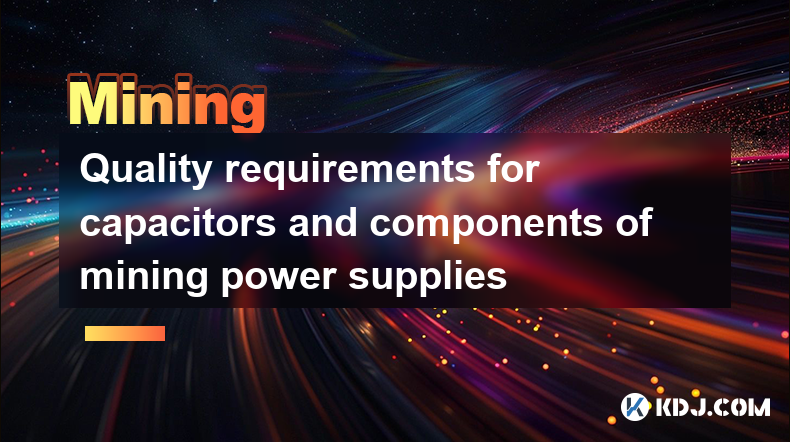
Quality requirements for capacitors and components of mining power supplies
Mar 29,2025 at 02:57pm
The Crucial Role of Power Supply Components in MiningMining cryptocurrencies, especially those using Proof-of-Work consensus mechanisms, demands significant computational power. This translates to a high power consumption, placing immense strain on the power supply units (PSUs) of mining rigs. The reliability and longevity of these PSUs are directly ti...
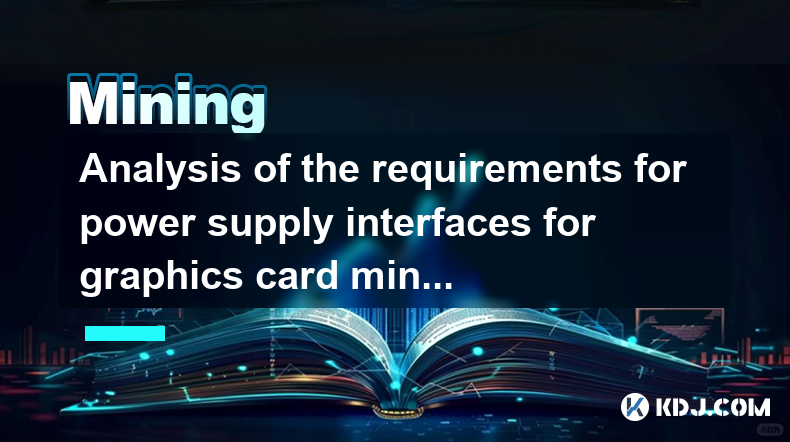
Analysis of the requirements for power supply interfaces for graphics card mining
Mar 29,2025 at 07:35pm
Understanding Power Supply Needs for GPU MiningGraphics card mining, particularly with high-end GPUs, demands substantial power. Understanding the power supply interface requirements is crucial for efficient and safe operation. Different GPUs have varying power consumption profiles and connector types. Failure to meet these requirements can lead to ins...
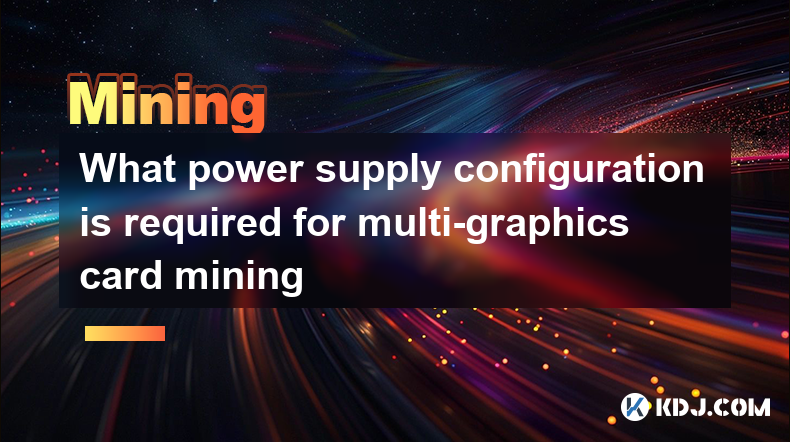
What power supply configuration is required for multi-graphics card mining
Mar 29,2025 at 11:08am
? Power Supply Needs for Multi-GPU Mining RigsMining cryptocurrency, particularly with multiple graphics cards (GPUs), demands a robust and reliable power supply. The power requirements aren't simply the sum of each GPU's TDP (Thermal Design Power). Several other components contribute significantly to the overall energy draw. Understanding these factors...
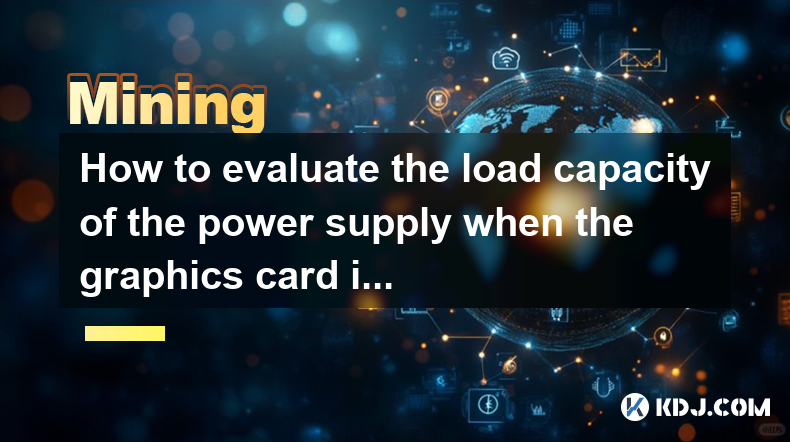
How to evaluate the load capacity of the power supply when the graphics card is mining
Mar 29,2025 at 11:14am
How to Evaluate the Power Supply Load Capacity When the Graphics Card is Mining Understanding Power Consumption in Cryptocurrency MiningCryptocurrency mining, particularly with GPUs, is a power-intensive process. Understanding your power supply's capabilities is crucial to prevent damage to your hardware and ensure stable operation. Insufficient power c...
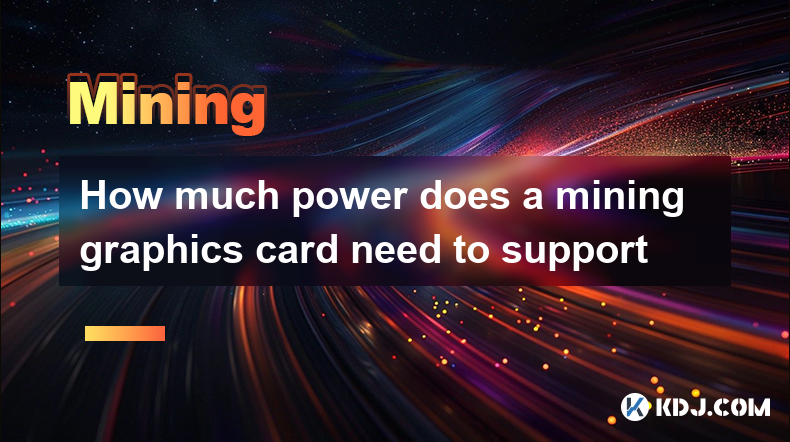
How much power does a mining graphics card need to support
Mar 29,2025 at 04:14pm
? Power Consumption in Cryptocurrency MiningThe power consumption of a graphics card (GPU) used for cryptocurrency mining is a crucial factor determining profitability and operational costs. The power draw isn't a fixed number; it varies significantly depending on several key aspects of both the card itself and the mining operation. Understanding these ...

Profit Model and Equipment Optimization of GPU Mining
Mar 29,2025 at 06:35pm
Understanding the Profitability of GPU MiningGPU mining, particularly for cryptocurrencies like Ethereum (before the merge) and others using similar algorithms, involves using graphics processing units (GPUs) to solve complex mathematical problems, validating transactions, and earning cryptocurrency rewards. The profitability hinges on several intercon...

Quality requirements for capacitors and components of mining power supplies
Mar 29,2025 at 02:57pm
The Crucial Role of Power Supply Components in MiningMining cryptocurrencies, especially those using Proof-of-Work consensus mechanisms, demands significant computational power. This translates to a high power consumption, placing immense strain on the power supply units (PSUs) of mining rigs. The reliability and longevity of these PSUs are directly ti...

Analysis of the requirements for power supply interfaces for graphics card mining
Mar 29,2025 at 07:35pm
Understanding Power Supply Needs for GPU MiningGraphics card mining, particularly with high-end GPUs, demands substantial power. Understanding the power supply interface requirements is crucial for efficient and safe operation. Different GPUs have varying power consumption profiles and connector types. Failure to meet these requirements can lead to ins...

What power supply configuration is required for multi-graphics card mining
Mar 29,2025 at 11:08am
? Power Supply Needs for Multi-GPU Mining RigsMining cryptocurrency, particularly with multiple graphics cards (GPUs), demands a robust and reliable power supply. The power requirements aren't simply the sum of each GPU's TDP (Thermal Design Power). Several other components contribute significantly to the overall energy draw. Understanding these factors...

How to evaluate the load capacity of the power supply when the graphics card is mining
Mar 29,2025 at 11:14am
How to Evaluate the Power Supply Load Capacity When the Graphics Card is Mining Understanding Power Consumption in Cryptocurrency MiningCryptocurrency mining, particularly with GPUs, is a power-intensive process. Understanding your power supply's capabilities is crucial to prevent damage to your hardware and ensure stable operation. Insufficient power c...

How much power does a mining graphics card need to support
Mar 29,2025 at 04:14pm
? Power Consumption in Cryptocurrency MiningThe power consumption of a graphics card (GPU) used for cryptocurrency mining is a crucial factor determining profitability and operational costs. The power draw isn't a fixed number; it varies significantly depending on several key aspects of both the card itself and the mining operation. Understanding these ...

Profit Model and Equipment Optimization of GPU Mining
Mar 29,2025 at 06:35pm
Understanding the Profitability of GPU MiningGPU mining, particularly for cryptocurrencies like Ethereum (before the merge) and others using similar algorithms, involves using graphics processing units (GPUs) to solve complex mathematical problems, validating transactions, and earning cryptocurrency rewards. The profitability hinges on several intercon...
See all articles






















































































